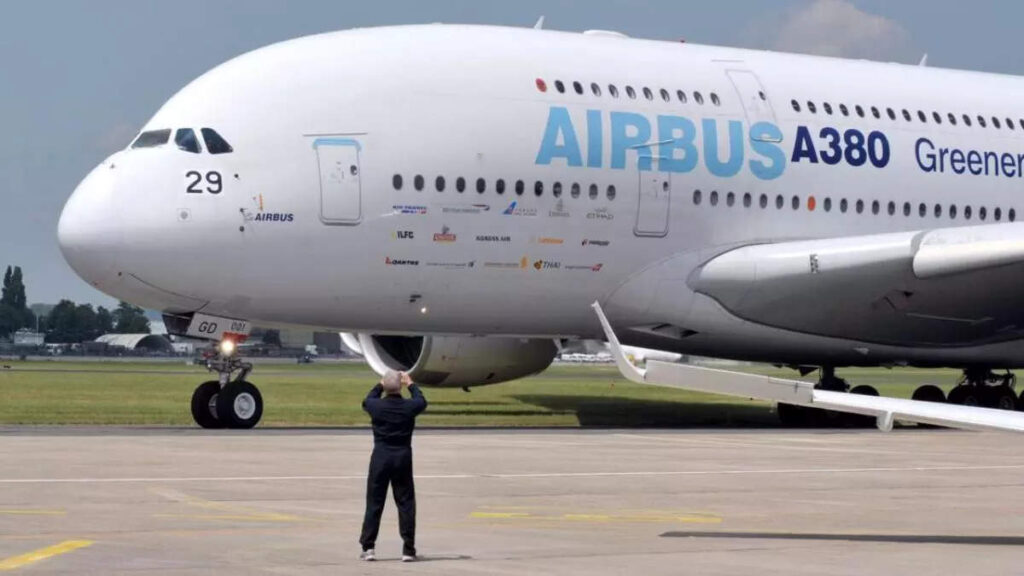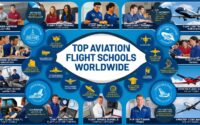The Airbus Commonality Concept: A Revolution in Flight Deck Design
The aviation industry is a marvel of technological advancements and operational efficiency, with Airbus standing as a pioneer in innovation. One of its most groundbreaking contributions is the Airbus commonality concept flight deck system. This revolutionary approach ensures that the cockpit layouts, operational systems, and flight controls are nearly identical across all Airbus aircraft. From the compact A220 to the double-deck A380, this design philosophy has proven to be a game-changer for airlines, pilots, and engineers alike.
This article delves deep into the commonality concept, exploring its origins, evolution, and the myriad advantages it brings to the aviation ecosystem. By standardizing design and operations, Airbus has set a benchmark for efficiency, cost-effectiveness, and safety.

The Airbus commonality concept is a revolutionary strategy that emphasizes uniformity across various elements of its aircraft, including cockpit layouts, flight systems, and operational procedures. By standardizing these features, Airbus has created a cohesive family of aircraft that is not only easier to operate but also significantly more cost-effective for airlines. This groundbreaking approach originated in the 1980s with the launch of the A320, Airbus’ first single-aisle aircraft equipped with digital fly-by-wire controls. This innovation marked a departure from traditional mechanical systems, setting a new standard for precision, safety, and operational efficiency in commercial aviation.
Over the years, the commonality concept has been progressively applied across Airbus’ product line, covering everything from narrow-body aircraft like the A220 and A320 family to wide-body models such as the A330, A350, and the double-deck A380. By ensuring consistency in design and operation, Airbus has successfully created a family of aircraft that simplifies training, streamlines maintenance and optimizes fleet flexibility, catering to the diverse needs of airlines worldwide.
Key Features of the Airbus Commonality Concept: Detailed Insights
Standardized Cockpit Layout
Airbus has meticulously designed its cockpits to ensure that the arrangement of instruments, control systems, and interfaces is identical across its aircraft family. Regardless of whether a pilot is flying an A319, an A320, or an A321, they will encounter the same ergonomic setup and operational controls. This uniformity greatly reduces the learning curve for pilots transitioning between different models. For instance, a pilot trained on the A320 can easily adapt to flying an A321 without undergoing extensive additional training. This design consistency also improves operational safety by minimizing the potential for errors caused by unfamiliar cockpit layouts during critical situations.
Fly-by-Wire Technology
A cornerstone of the commonality concept is Airbus’ pioneering fly-by-wire system, which replaces traditional mechanical and hydraulic flight controls with digital systems. This advanced technology translates pilot inputs into electronic signals, which are then processed by computers to control the aircraft. Fly-by-wire not only enhances precision and responsiveness but also introduces flight envelope protection—a system that prevents the aircraft from exceeding safe operational limits. This feature ensures that all Airbus models equipped with fly-by-wire behave consistently, providing pilots with a predictable and familiar handling experience, irrespective of the specific aircraft.
Simplified Pilot Training
One of the most significant advantages of the commonality concept is the single-type rating that Airbus pilots receive. This certification allows pilots to seamlessly operate multiple Airbus models within the same aircraft family. For example, a pilot certified to fly the A320 can also operate the A319, A321, and even variants of the A320neo without requiring extensive additional training. This streamlined training approach not only saves airlines millions of dollars but also reduces the time pilots spend in training facilities. Moreover, it enables airlines to adapt their fleet utilization more dynamically, assigning pilots to different aircraft as per operational needs without significant logistical challenges.
Integrated Maintenance Systems
Maintenance efficiency is another critical pillar of the Airbus commonality concept. Airbus aircraft are equipped with centralized diagnostic systems, such as the Centralized Fault Display System (CFDS), which provide engineers with real-time data on the aircraft’s performance and potential faults. These systems are designed to be consistent across all models, ensuring that engineers familiar with one Airbus aircraft can easily diagnose and address issues in another. Additionally, the use of interchangeable parts and shared maintenance procedures across the Airbus family reduces inventory requirements and simplifies logistics, leading to faster turnaround times and lower operational costs.
Origins and Evolution of the Airbus Commonality Concept
The Birth of Commonality
Airbus introduced the commonality concept in the 1980s with the launch of the A320, which marked a departure from traditional cockpit designs. The adoption of fly-by-wire technology allowed for greater standardization, enabling Airbus to create a unified cockpit layout that would later become the foundation for its entire fleet.
Expansion Across the Fleet
As Airbus expanded its product line, the commonality concept was applied to wide-body aircraft like the A330 and A340 in the 1990s. The introduction of the A350 and A380 in the 2000s further cemented Airbus’ commitment to this design philosophy. Today, even the regional A220 adheres to the commonality principle, ensuring consistency across the Airbus family.
Milestones in the Evolution of Commonality
- 1988: A320 introduces fly-by-wire technology, setting a new standard for cockpit design.
- 1994: The A330 and A340 adopt similar cockpit layouts, extending the concept to long-haul operations.
- 2005: A380, the world’s largest passenger aircraft, incorporates the same flight deck design principles.
- 2015: A350 XWB debuts with advanced systems while maintaining commonality with other Airbus models.
- Present Day: A220, designed for short-haul routes, aligns with Airbus’ commitment to standardization.
Advantages of the Airbus Commonality Concept
The commonality concept offers significant benefits to three primary stakeholders in the aviation industry: airlines, engineers, and pilots. Let’s explore these advantages in detail.
1. Advantages for Airlines: Reducing Costs and Increasing Flexibility
a. Lower Maintenance Costs
Operating multiple Airbus models is akin to managing a single type of aircraft due to shared parts, tools, and procedures. This reduces maintenance complexity and costs.
- Unified Spare Parts Inventory: Airlines require fewer spare parts as the same components are used across different Airbus models.
- Streamlined Training for Maintenance Staff: Engineers trained on one Airbus model can service others without additional certification.
b. Enhanced Operational Flexibility
- Mixed Fleet Operations: Airlines can deploy pilots and cabin crew across different Airbus aircraft without additional training, maximizing workforce efficiency.
- Route Optimization: Airlines can adjust their fleet deployment based on passenger demand, using smaller aircraft (e.g., A319) during off-peak periods and larger ones (e.g., A321) during peak seasons.
c. Reduced Training Costs
- Pilots, engineers, and cabin crew require less training due to standardized systems and procedures.
- Cost Savings: Airlines save up to 30% on training costs by adopting the Airbus commonality concept.
d. Scalable Fleet Management
The commonality concept allows airlines to expand their fleets with minimal disruption.
- For example, an airline operating the A320 can easily add A319 or A321 aircraft without significant changes to operations or infrastructure.
2. Advantages for Engineers: Simplified Maintenance and Licensing
a. Unified Maintenance Procedures
Engineers benefit greatly from the commonality concept as it simplifies diagnostics, fault rectification, and repairs.
- Centralized Fault Display System (CFDS): This advanced system identifies and analyzes faults in real time, reducing downtime and enhancing efficiency.
- Ease of Repairs: Common components and interfaces mean that engineers can quickly replace faulty parts, minimizing aircraft turnaround times.
b. Streamlined Licensing
- Engineers trained on one Airbus model can easily obtain certifications for others within the same family.
- This reduces training duration and costs, benefiting both engineers and airlines.
c. Time-Saving Maintenance
- The standardized design ensures that engineers can perform maintenance tasks quickly and accurately.
- For example, diagnosing a cockpit fault on an A320 is as straightforward as on an A319 or A321.
3. Advantages for Pilots: Seamless Transition and Cost-Effective Training
a. Mixed Fleet Flying
Airbus’ commonality concept enables pilots to operate multiple aircraft with a single type rating.
- Example: A pilot certified for the A320 Family can fly any of its variants (A318, A319, A320, A321).
- This flexibility allows airlines to optimize fleet deployment based on demand.
b. Lower Training Costs
- Standardized cockpit layouts reduce the time and cost of pilot training.
- Savings: Airlines save hundreds of thousands of euros per aircraft on pilot training programs.
c. Improved Safety and Efficiency
- Familiarity with standardized controls and displays reduces pilot workload, enhancing situational awareness and safety.
- Pilots can transition between aircraft with minimal adjustment, ensuring smoother operations.
d. Future Career Benefits
- Pilots trained on Airbus aircraft are highly sought after due to the widespread adoption of the commonality concept, which has increased their career opportunities.
A Comparative Analysis of Airbus and Traditional Systems
| Aspect | Airbus Commonality Concept | Traditional Systems |
|---|---|---|
| Cockpit Layout | Standardized across all models | Varies significantly between models |
| Pilot Training | One type rating for multiple aircraft | Separate training for each model |
| Maintenance | Simplified with common parts and procedures | Unique tools and procedures for each model |
| Operational Flexibility | Allows mixed fleet flying | Limited flexibility |
| Cost Savings | High | Moderate |
| Safety | Enhanced by standardization | Potential for errors due to varying interfaces |
Real-World Applications: Case Studies
Case Study 1: Airline X
- Fleet Composition: A319, A320, A321.
- Operational Challenge: Fluctuating passenger demand across seasons.
- Solution:
- During peak seasons, Airline X deploys larger A321 aircraft.
- During off-peak periods, smaller A319s are used.
- Pilot and maintenance crew transition seamlessly between models, saving costs and maximizing efficiency.
Case Study 2: Engineer Y
- Scenario: Engineer Y works for an airline operating an A320 Family aircraft.
- Benefit: With certifications for one Airbus model, Engineer Y can service all aircraft in the family, reducing the need for additional training and increasing career flexibility.
Technological Innovations Driving Commonality
1. Fly-by-Wire Technology
Airbus was a pioneer in adopting fly-by-wire controls, replacing mechanical systems with electronic ones. This innovation paved the way for cockpit standardization.
2. Centralized Fault Display System (CFDS)
The CFDS provides real-time fault analysis, reducing downtime and improving efficiency.
3. Advanced Avionics
Airbus integrates cutting-edge technology in its cockpits while maintaining a familiar layout, ensuring pilots can adapt quickly to new models.
Future Implications of the Airbus Commonality Concept
As aviation technology evolves, the concept of commonality will remain integral to Airbus’ strategy. Emerging trends such as artificial intelligence, enhanced automation, and real-time data analysis will further streamline operations, reducing costs and improving safety.
Predicted Developments
- AI-Driven Diagnostics: Automated systems will predict maintenance needs, further reducing downtime.
- Enhanced Training Simulators: Advanced simulators will provide more immersive training experiences, reducing the time required for certification.
- Sustainability Integration: Standardized systems will facilitate the adoption of sustainable aviation technologies, such as hybrid-electric propulsion.
Conclusion
The Airbus commonality concept has redefined the aviation industry, offering unparalleled advantages to airlines, engineers, and pilots. Airbus has created a cohesive family of aircraft that sets a benchmark for efficiency, cost-effectiveness, and safety by standardizing cockpit layouts, flight systems, and operational procedures.
As the aviation industry continues to grow and evolve, the commonality concept will remain a cornerstone of Airbus’ design philosophy, ensuring that airlines can adapt to changing demands while maintaining operational excellence. Whether you’re a pilot transitioning between aircraft, an engineer diagnosing a fault, or an airline optimizing its fleet, Airbus’ commonality concept exemplifies the power of innovation in shaping the future of aviation.



